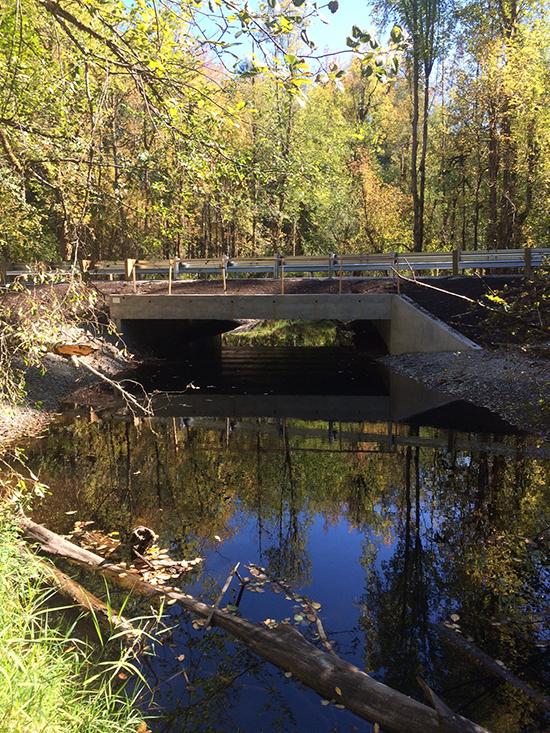|
Subscribe / Renew |
|
|
Contact Us |
|
| ► Subscribe to our Free Weekly Newsletter | |
| home | Welcome, sign in or click here to subscribe. | login |
Construction
| |
 |
May 26, 2017
Highway and transportation
Under $5 million

State Route 121 Blooms Ditch fish barrier removal
Location: Olympia
General contractor: Granite Construction Co.
Owner/developer: Washington State Department of Transportation
The project’s primary goal was to improve fish passage within the Black River Watershed.
The existing conduit for the stream crossings along state Route 121 were old and undersized metal culverts. These culverts were identified as impingements for fish migration and required improvements to allow access to additional habitat for salmonids in the watershed.
Part of the work involved raising the roadway grades to limit closures due to flooding. Safety was improved by increasing sight distances and installing additional safety features.
This project had very challenging geotechnical conditions consisting of sands and silts in conjunction with a very high water table. Granite led a team of experts including a hydrologist, project engineer and drilling contractor to find a solution to the groundwater issue.
The team came up with an innovative groundwater-control plan composed of a deep well system and utilized adjacent forested areas for the infiltration of water. This system functioned well, drawing down the groundwater, allowing for installation of the culverts. It minimized impacted sensitive areas and the cost for treating water.
The new precast box culverts were designed to be installed within the same alignment as the existing stream channel. This being the case, a bypass of the existing stream was required.
Granite devised a bypass plan conforming to all permit and contractual requirements. During development of the bypass plan the team discovered that the design requirements were excessive. Granite was able to reduce the amount of flow that the bypass system had to be designed for, cutting costs and shrinking the footprint bypass system by over 33 percent.
Other Stories:
- GRAND AWARD CONSTRUCTION
Private building
$20 million-$50 million - Specialty contractor: Safety
Under 500,000 hours - Specialty contractor: Safety
500,000-1 million hours - Specialty contractor: Safety
Over 1 million hours - Construction manager: Safety
Over 100,000 hours - Civil contractor: Safety
Under 100,000 hours (TIE) - Civil contractor: Safety
Under 100,000 hours (TIE) - Civil contractor: Safety
Over 100,000 hours - General contractor: Safety
Under 100,000 hours - General contractor: Safety
100,000-250,000 hours - General contractor: Safety
250,000-450,000 hours - General contractor: Safety
Over 450,000 hours - Project Manager of the Year
- Brian Salsgiver Safety Professional of the Year
- Private building
$50 million-$100 million - Private building
$5 million-$20 million - GRAND AWARD SAFETY
Construction manager: Safety
Under 100,000 hours - AGC/Moss Adams Community Service Award
- Innovation
- Tenant improvement
Under $5 million - Tenant improvement
Over $5 million (tie) - Tenant improvement
Over $5 million (tie) - Highway and transportation
$5 million-$15 million - Highway and transportation
$15 million-$50 million - Heavy/Industrial
- Public building
$2 million-$5 million - Public building
$5 million-$20 million - Public building
$20 million-$50 million - Private building
$2 million-$5 million - Superintendent of the Year


